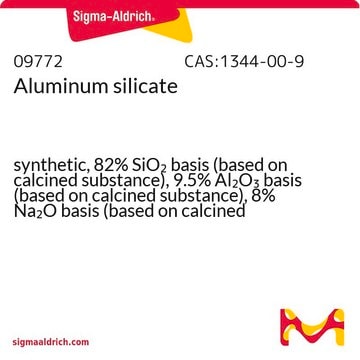556130
Bismuth
pieces, 1-12 mm, 99.999% trace metals basis
Synonym(s):
Bismuth element, Bismuth-209
About This Item
Recommended Products
vapor pressure
<0.1 mmHg ( 20 °C)
assay
99.999% trace metals basis
form
pieces
resistivity
129 μΩ-cm, 20°C
particle size
1-12 mm
bp
1560 °C (lit.)
mp
271 °C (lit.)
density
9.8 g/mL at 25 °C (lit.)
SMILES string
[Bi]
InChI
1S/Bi
InChI key
JCXGWMGPZLAOME-UHFFFAOYSA-N
Looking for similar products? Visit Product Comparison Guide
General description
Application
- Research Update: Bismuth based materials for photovoltaics: This research update briefly summarizes the developments in bismuth materials for use in photovoltaics, focusing on bismuth-based perovskites and bismuth halides (Cates & Bernechea, 2018).
- Bismuth-based photocatalysts for solar energy conversion: This study reviews bismuth-based photocatalysts, which are gaining attention for their efficiency in solar energy conversion (Wang, Wang & Huang, 2020).
Storage Class
11 - Combustible Solids
wgk_germany
nwg
flash_point_f
Not applicable
flash_point_c
Not applicable
ppe
Eyeshields, Gloves, type N95 (US)
Certificates of Analysis (COA)
Search for Certificates of Analysis (COA) by entering the products Lot/Batch Number. Lot and Batch Numbers can be found on a product’s label following the words ‘Lot’ or ‘Batch’.
Already Own This Product?
Find documentation for the products that you have recently purchased in the Document Library.
Customers Also Viewed
Our team of scientists has experience in all areas of research including Life Science, Material Science, Chemical Synthesis, Chromatography, Analytical and many others.
Contact Technical Service







